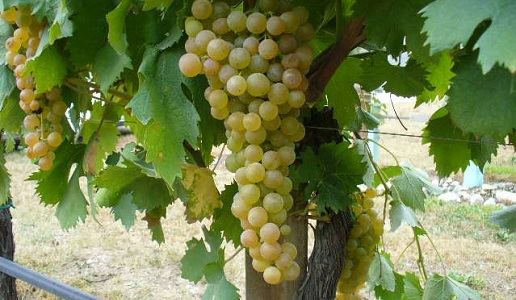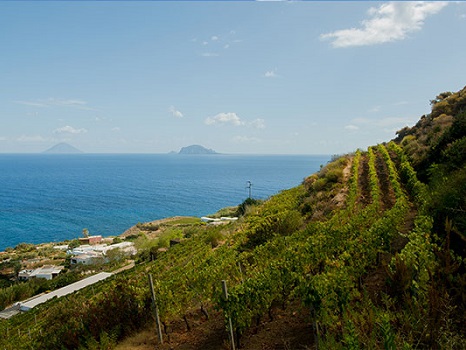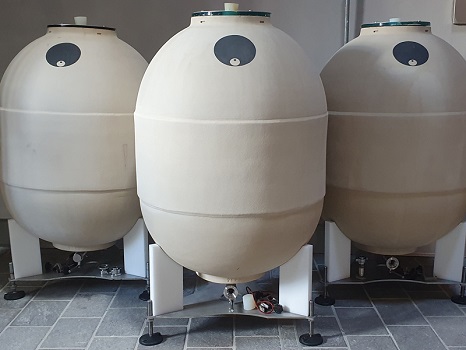It’s easy to say Malvasia

Speaking of Malvasia, we tend to lump everything together. But there is Malvasia and Malvasia, and today we bring you two from different worlds: one from Emilia (from Piacenza, to be exact) and one from Sicily (from Lipari).
Malvasia, in its many variations, is one of the 4 aromatic grape varieties we find in Italy, along with Gewürztraminer, Brachetto and Moscato (but it would be better to say "i" Moscato). As well as the latter, several varieties of Malvasia are grown: Bianca, di Candia, di Basilicata, Bianca Lunga, del Lazio, di Casorzo, di Lipari, di Sardegna, di Schierano, Istriana, del Chianti, Nera di Basilicata, Nera di Brindisi, Nera di Lecce... and that's not all yet. According to the agronomist Giovanni Dalmasso, born in the late 19th century, "If we were even to list all the grape varieties that more or less legitimately bear the name Malvasia-and thus try to determine which have reason to retain this name and which do not-we would have to occupy several pages without hoping to succeed in this endeavor."
 In fact, it seems that there are grape varieties that are called Malvasias only because they are rich in a certain aromaticity, because they come from the Greek world, and because... historically they were guaranteed a greater commercial value. They are not even all white grapes; in fact, we also have several Malvasia Nera. In short, it would be hair-raising.
In fact, it seems that there are grape varieties that are called Malvasias only because they are rich in a certain aromaticity, because they come from the Greek world, and because... historically they were guaranteed a greater commercial value. They are not even all white grapes; in fact, we also have several Malvasia Nera. In short, it would be hair-raising.
Today we are focusing on Malvasia di Candia aromatica, one of the richest of the existing malvasias, endowed with a particularly intense and complex aromatic set of traits that-in the Emilian territories-has shown great versatility. We find it Frizzante (both dry and sweet), Ferma, Appassita and as Vin Santo. The other is Malvasia di Lipari, which in the Aeolian islands has given birth above all to a Passita version of great quality, already mentioned by Diodorus Siculus (1st century BC), telling of a sweet wine produced in Salina. For years now many producers have been devoting themselves to a dry still version of Malvasia, and it is this one that we propose.
 It is the Secca del Capo of the Colosi family, which has been growing grapes in Salina for more than 40 years in 10 hectares of vineyards between Capo Faro and Porri. The plantings are terraced thanks to old dry-stone walls, and nestled among the vines is the winemaking cellar, which is partially underground to comply with the strict regulations that protect the Aeolian territory.
It is the Secca del Capo of the Colosi family, which has been growing grapes in Salina for more than 40 years in 10 hectares of vineyards between Capo Faro and Porri. The plantings are terraced thanks to old dry-stone walls, and nestled among the vines is the winemaking cellar, which is partially underground to comply with the strict regulations that protect the Aeolian territory.
The second wine, however, comes from Val Tidone, where we find the Mossi 1558 winery, creator of territorial and well-executed wines. We are talking about the Malvasia dei Colli Piacentini Baciamano, a wine born in 2019 with the intention of giving voice to the aging potential of Malvasia di Candia Aromatica.
To read the wine sheets, click on the names.
Related Products
| Product | Producer | Date of publication | Author | Read | |
|---|---|---|---|---|---|

|
Cantine Colosi
|
10/10/17 | Redazione |
Run by Piero Colosi, a member of the family’s fourth generation, with the help of his father Pietro, Cantine Colosi is situated in Giammoro, in the province of Messina, where the wine is made,... Leggi tutto |
|

|
Baciamano 2020
Colli Piacentini |
Mossi 1558 | 05/30/23 | Daniele Cernilli |
100% Malvasia di Candia aromatica. Ceramic amphorae for 8 months on the yeasts. Intense straw yellow color. Aromas of flowers, varietal, complex, aromatic notes of sage, cedar, wildflowers, flint,... Leggi tutto |

|
Secca del Capo 2022
Salina |
Cantine Colosi | 05/30/23 | Stefania Vinciguerra | |

|
Mossi 1558
|
02/20/18 | Redazione |
From the producer's website:
Our story began in 1558, when the name of Jo Francesco Mossi was recorded for the first time in the census registers. A resident of Albareto with his wife and six... Leggi tutto |

 Italiano
Italiano







